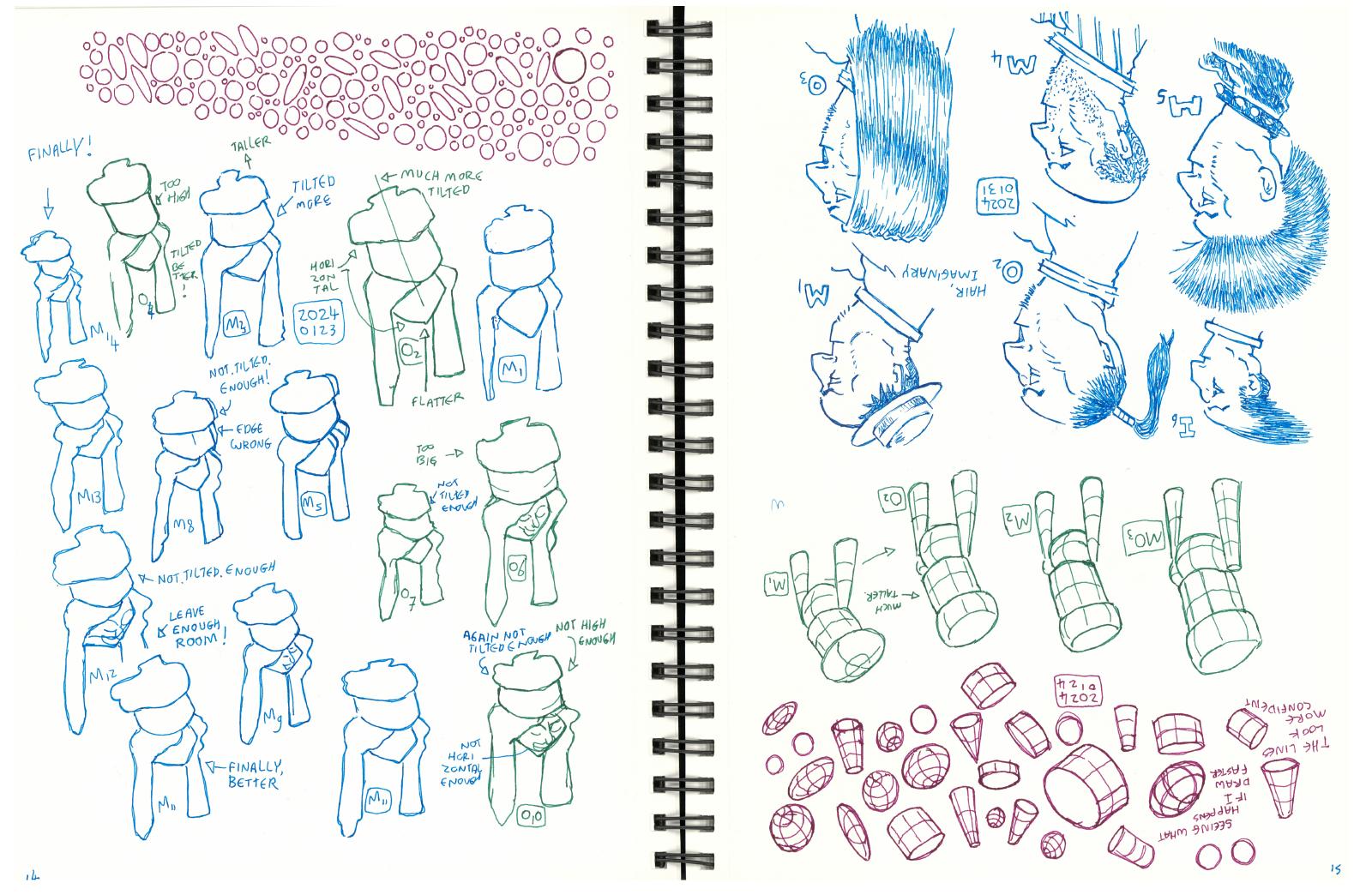#137 - Insane Advantages Of Copying Other Artists
Rembrandt did it!Warm-Up Drawing Exercises

Quickly become better at drawing—without burning out—by using my workbook.
Before that, practicing by copying had enormous benefits because you learn so much from it. Artists before us spent lifetimes figuring things out, and we can learn what they discovered by copying their work.
Years ago, I digitally inked over Joseph Clement Coll’s illustrations and learned a lot about how he went about cross-hatching. It changed how I cross-hatched! He instead hatched; lines were usually all in the same direction. Not always, but mostly. He built up a hatching, adding lines where he felt they had to be to build up the right tone and texture to suggest the underlying material. There are white gaps between the hatch lines halfway through the hatching process. He kept filling these up with new lines until he had the right tone and texture.
The drawing exercises I share are about copying line art. I started with Charles Bargue’s plates and George Bridgman’s anatomy studies. Then I tried photos. The first attempt was to trace, but I immediately saw that the result was not as pleasing. The Bargue and Bridgman illustrations were beautifully simplified and idealized forms and shapes. To get at that, I had to learn to simplify and idealize. And the beauty of copying the Bargue and Bridgman drawings is that you learn how they went about it. I crawl inside their head and learn to make these simplified, idealized designs myself.
When you copy masters, you learn what things look like and how the masters went about composition, simplification, and idealization. You discover their thought processes. You learn how they thought while they drew. And THAT you take with you when you start making original work for an audience.
It is mind-blowing to think about; we can tap the wisdom of artists from the past thousands of years, study and analyze the art of the old Greeks and Romans, art from other cultures, and learn from all of them just by copying. It’s a gigantic, huge free library of artist techniques freely at our disposal.
The beauty is that you can pick any artist to be your teacher and that it is free! Please don’t sell the copies and pass them off as your own; that is plagiarism. But it is a tremendous way to learn!
You tend to end up with visually pleasing results because the original design you are copying is so lovely, which is motivating. You will want to draw again the next day.
You can not sell copies of copyrighted work, and passing it off as your own is plagiarism. That is also an advantage: it means you are making these drawings for yourself, not for others. I did find myself sharing pages from my sketchbooks on social media and in my articles. I think it is acceptable to do these copies and studies for educational purposes and to share them as examples. There is a stigma on copying, so you only see a few examples. If artists do it, they keep the copies to themselves, so you rarely get to see it, which is a pity because it is such a helpful exercise!